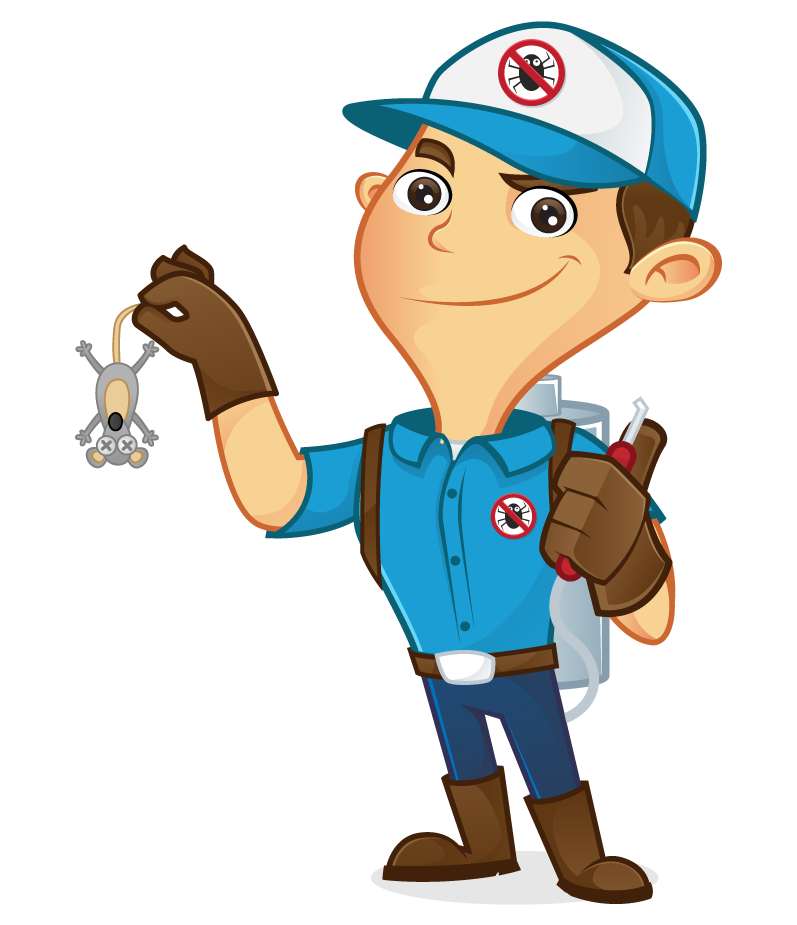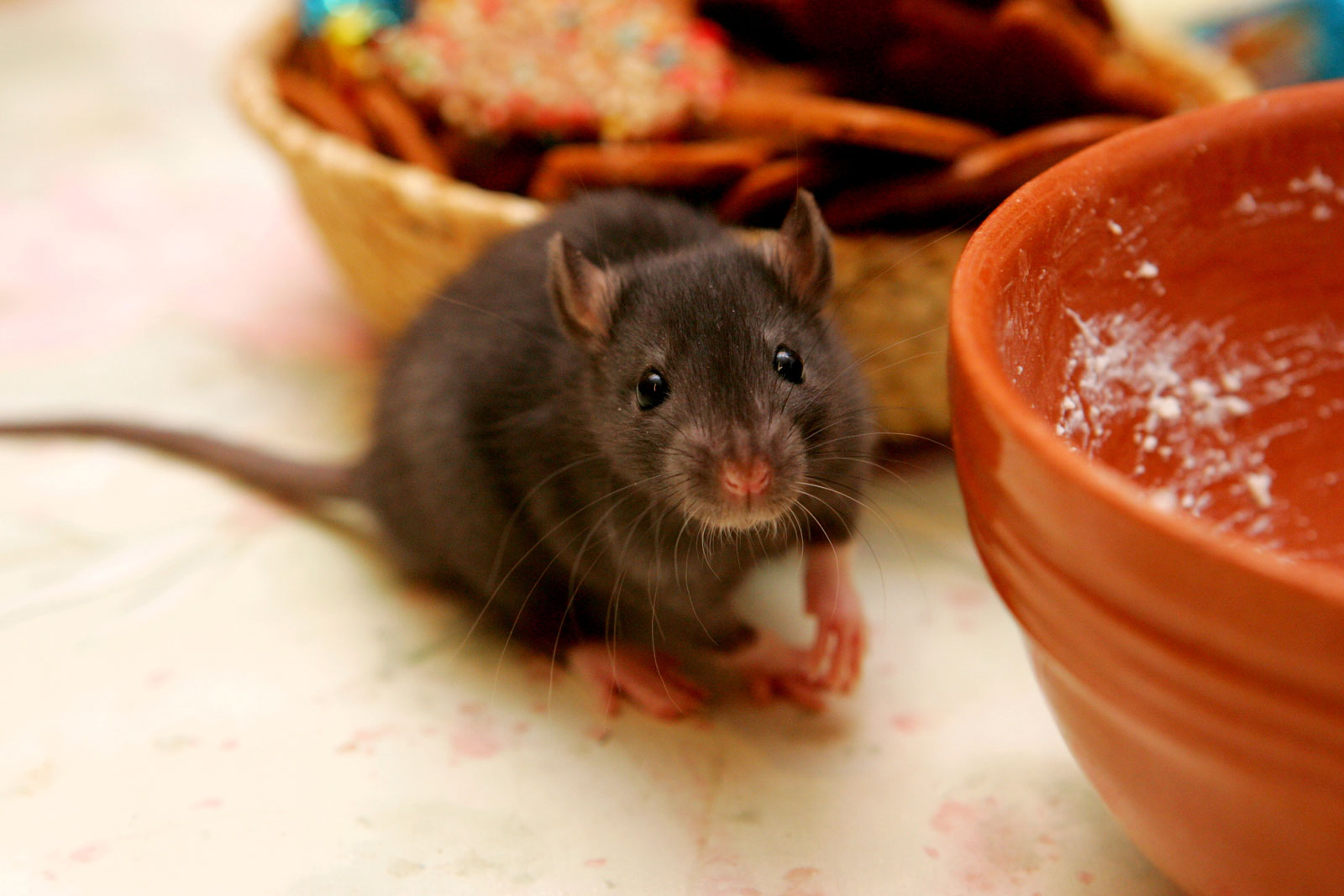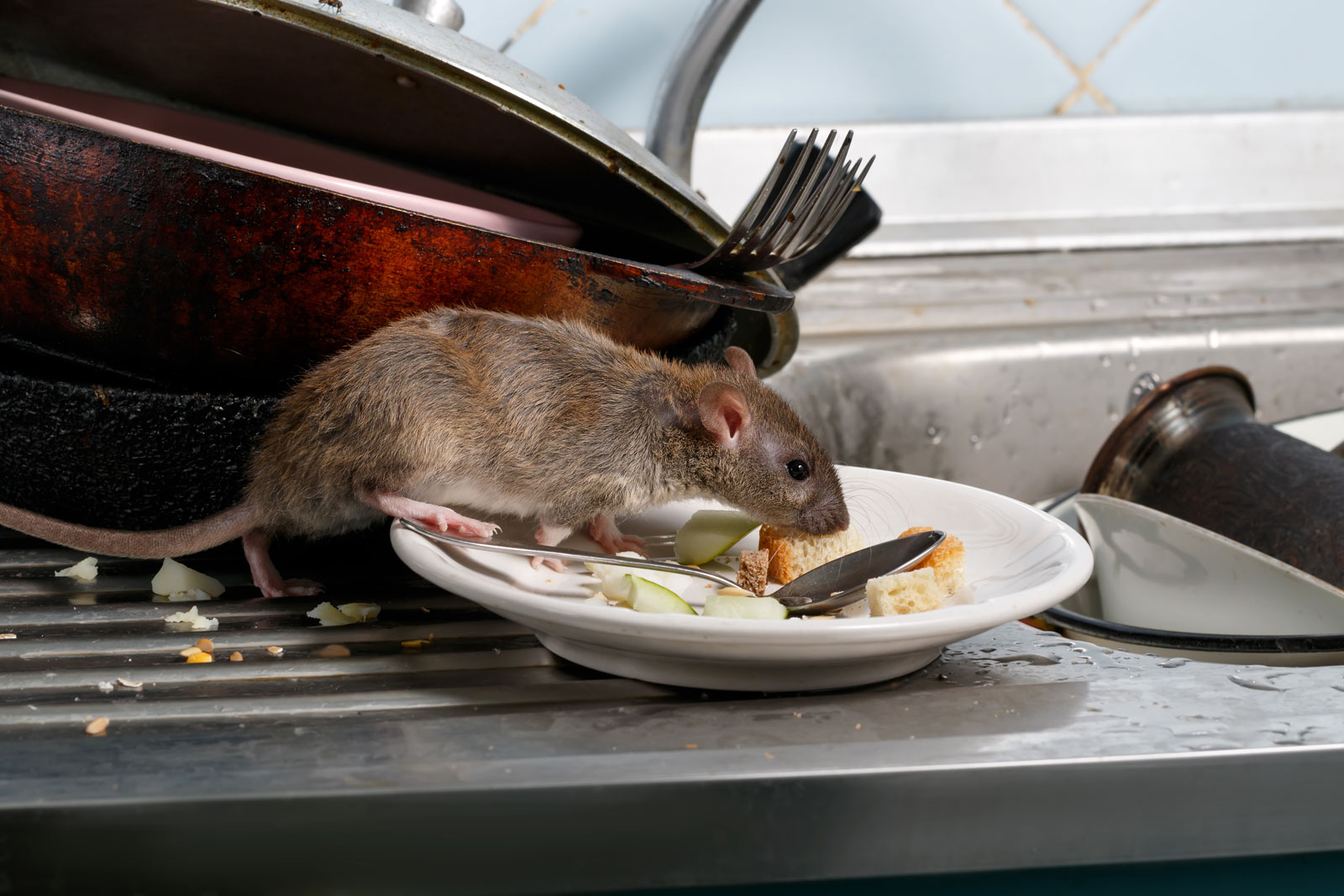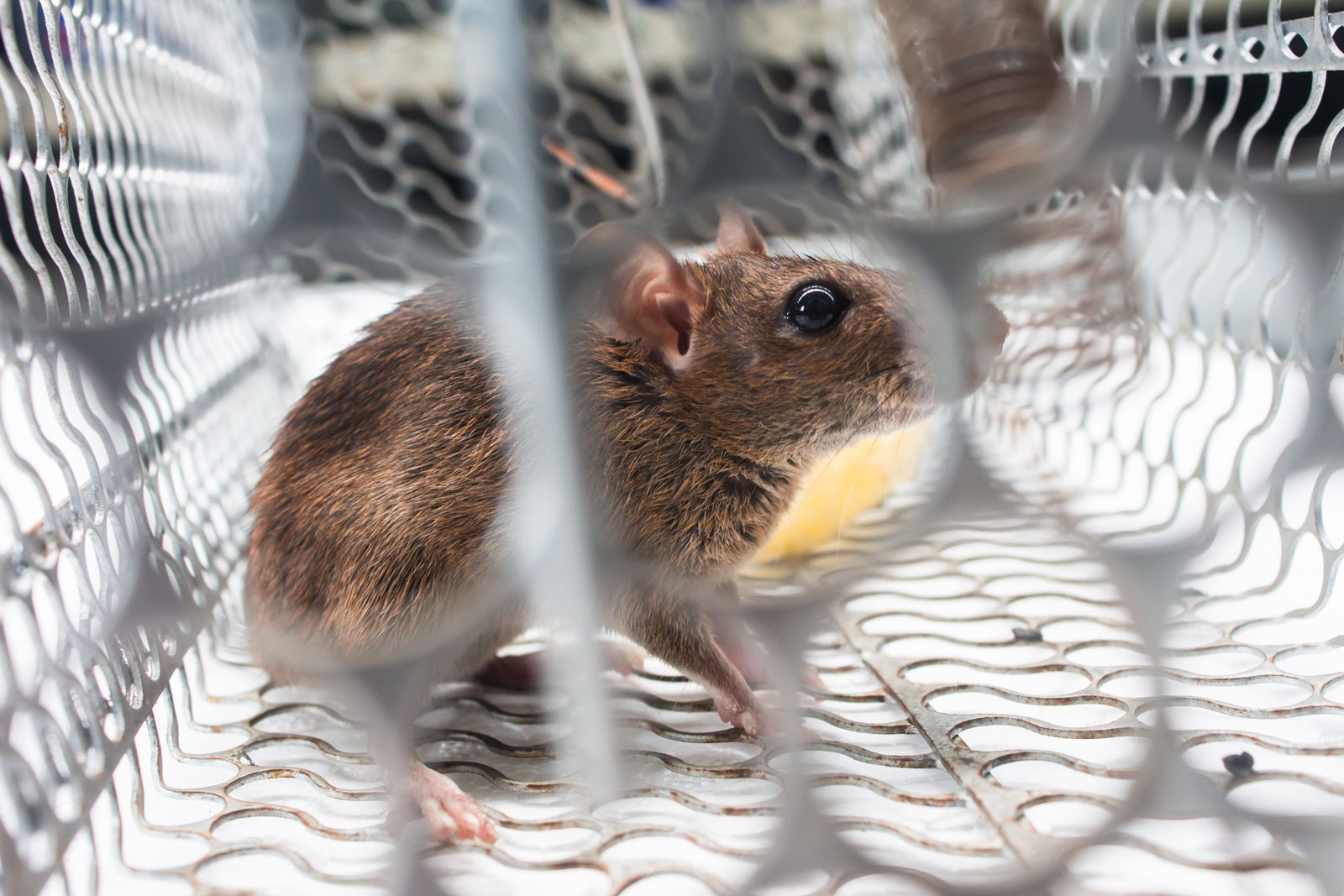Rat Exterminator DetroitOver 30 Years of Experience!
Contact One Of Our Rat Experts!
Expert Rat Removal and Control
Rats are long-tailed rodents similar to mice but distinguished often by their difference in size. Rats also have much longer feet and bigger heads than mice. They thrive in human environments and can be found anywhere from busy cities to pristine suburbs. They can travel far and are known as scavengers. Trapping them can be difficult due to their keen sense of awareness in their environment.

Rattus Rattus (Black Rat) Rattus Norvegicus (Brown Rat)
- Kingdom: Animalia
- Phylum: Chordata
- Class: Mammalia
- Order: Rodentia
- Suborder: Myomorpha
- Superfamily: Muroidea
- Family: Muridae

Rats at a Glance
- On average Rats measure about 9 inches from head to end of tail.
- Rats can weigh up to 2 lbs.
- They have excellent hearing and nocturnal vision.
- They have sharp teeth and incisors never stop growing.
- They gnaw continuously in order to keep incisors a manageable length.
- They have black, brown, or grey fur and no hair on tails.
- Rats carry diseases harmful to humans administered through saliva.
Pronto Pest A Michigan Rat Exterminator
At Pronto Pest Management we have over 30 years of experience helping home and business owners find and eliminate rats. We can quickly determine the location of the nest and the extent of the infestation. We will then use the best treatment method available to ensure they are no longer a concern. You will not find a rat exterminator in Michigan with more expereince or dedication. Contact us today to schedule a treatment!
Michigan Pest Control (248) 399-4298 - Pronto Pest
How do rats spread/get in your home?
Rats have the ability to squeeze into the smallest of areas. Despite their size, they can contort and slide like jelly through holes in the foundation of your home. Areas to look out for are: the roof, insulation pipes, ground level crawl space vents, vent screens, pipe entry holes, electrical wiring holes, soffit vents, fascia boards, roof joints, AC chases etc. Because rats gnaw and burrow through anything they can end up anywhere from your walls to your attic or basement. It is of utmost importance that all possible entries are sealed and rat teeth proof. At the age of 3 to 4 months, a rat becomes mature enough to reproduce. Female rats can mate up to 500 times 15 times a year. Meaning that a pair can reproduce up to 2000 offspring a year if left to breed.

What Are The Signs of Rats in Your Home?
Rats leave several traces of evidence behind during their invasion. One sign is rat droppings. Their feces resemble grains of rice (but larger) in a dark brown color. Due to the nature of their filthy ways, rats tend to leave grease or dirt marks on the floors as their abdomens drag across it. An audible form of evidence includes the sound of scratches in the walls and ceilings. Brown rats tend to dig holes and are usually found in basements. They make extensive burrow systems to nest. Nests are made with shredded materials such as shredded paper, insulation or cardboard. Any piles of these materials can be taken a sign of a possible infestation. If the infestation is in an attic, it would be wise to also look out for footprints as they may be seen on dusty floors.

I Have Rats! How Do I Avoid an Infestation?
- Search the home for their nest. Follow the rat carefully in order to get to it. Call a professional. Traps seldom take care of a problem, as rats are wary of foreign objects.
- Keep all containers in the kitchen sealed tight and avoid leaving any surface areas littered with crumbs.
- Declutter your home.
- Use impenetrable containers to store food. This includes pet food.
- Turn compost piles over newer additional scraps.
- Avoid feeding any stray animals outside your home.
- Seal all holes allowing more rats to enter.
- Set traps outside of the home.

Early Detection
Check all possible entries to the home. Remember, even adult rats can contort and fit through holes the size of a quarter. If you see a rat in a common area, it probably means you have a large infestation since they are known to avoid humans and hide in walls and dark spaces. If the population grows too much they seek new territory. The safest way to prevent this is to call for removal as soon as you see or hear any of the first signs such as unexplainable holes, stains on the floor, droppings, scratching or shredded materials used for nests.
Indoors check:
- Lofts and Attics
- Kitchen and Laundry Rooms
- Any cavity walls or crawl spaces
Outdoors check:
- Decks
- Sheds
- Garages
- Drains
- Compost Bins
- Garbage Cans
- Screens for holes

Rats & Disease
Although seldom seen, rats exhibit aggressive behavior when they feel threatened. They have large teeth and rat bites can cause several infections or diseases and should be treated immediately. Due to their curious nature rat bites can occur during sleep when a rat is seeking food or shelter near the human's bed. In rare cases, it can occur during an aggressive encounter. If a rat bites you, seek medical attention immediately.
These diseases are administered through their saliva. Although in the United States we have yet to see a rat bite giving a human a case of rabies, it is advised to go to the hospital immediately. Rats can be deadly. Their ability to spread disease is what they’re known for. Aside from their ability to spread disease they can also cause severe damage to infrastructure through their nesting, gnawing and rummaging habits. Rat gnawing through cables or wires may cause electrical fires if not found in time. They also tend to leave dirt and grease marks on floors. They like to hide from humans and if seen it may be a sign that the rat population is large in numbers and space is limited
